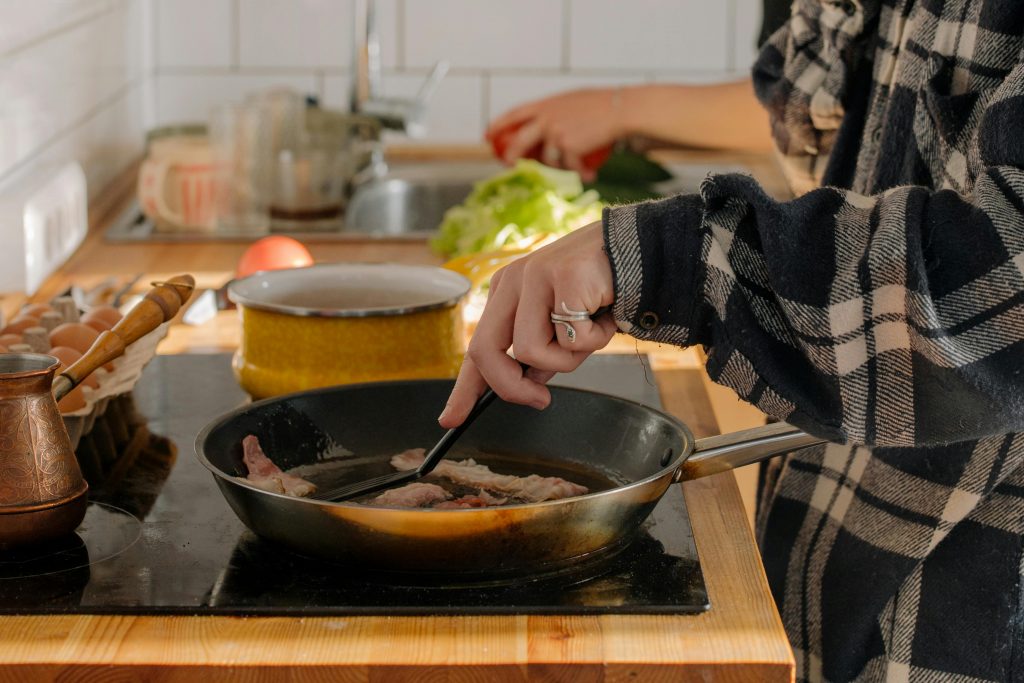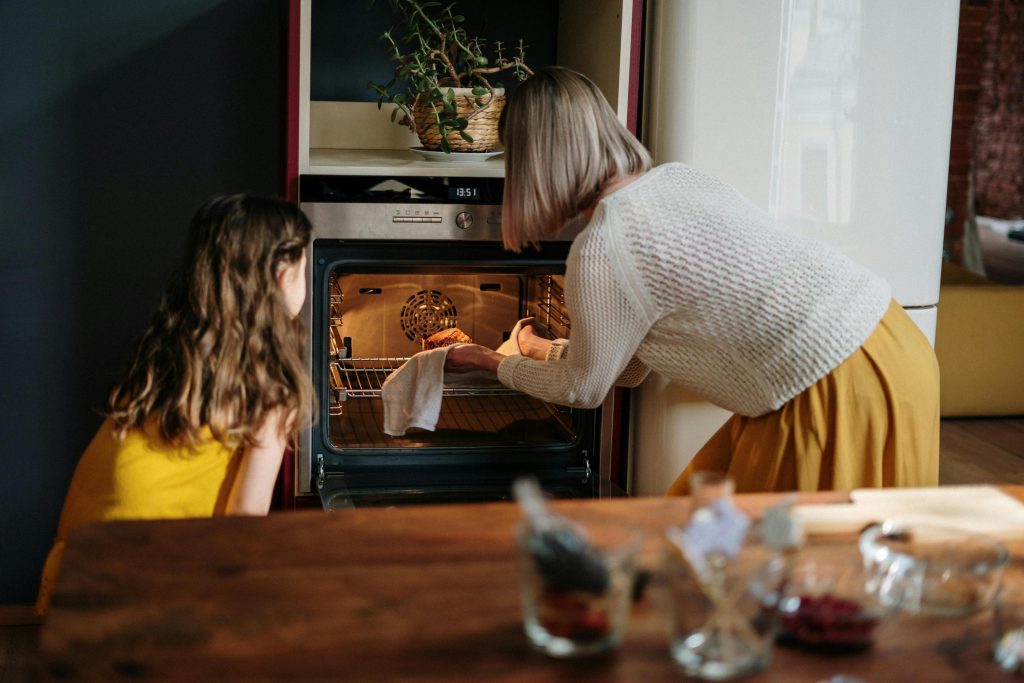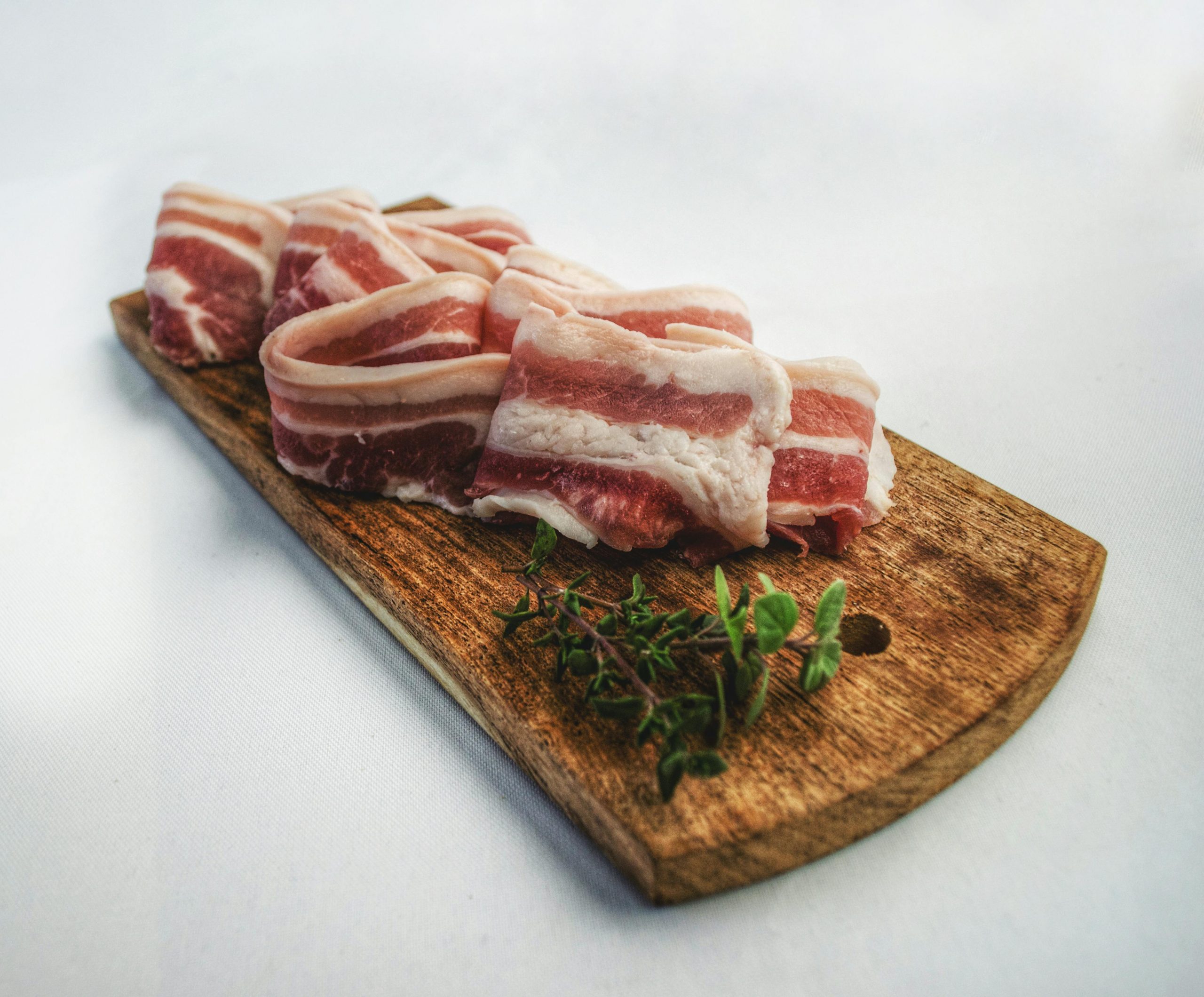Disclaimer: Articles About Food. This site provides food and drink content for informational purposes only.
Bacon is one of those foods that can easily elevate any meal, from a hearty breakfast to a tasty addition to salads and sandwiches. But what happens when you have frozen bacon and need to cook it straight from the freezer? Many people wonder, “Can you cook frozen bacon?” The good news is yes, you can cook frozen bacon, and it’s easier than you might think! Whether you’re in a rush or just didn’t plan ahead, you don’t need to worry about thawing bacon before cooking it. There are a variety of methods for cooking frozen bacon, and each one will give you crispy, delicious results.
In this article, we’ll explore different ways to cook frozen bacon, from pan-frying to baking and even microwave options. We’ll also cover tips on defrosting bacon when needed and how to store it for future meals. Let’s dive into how to cook frozen bacon and ensure that it’s just as tasty as freshly thawed bacon.
Can You Cook Frozen Bacon?

Yes, you can cook frozen bacon, but the method you choose will depend on your preference and the tools you have available. The key is understanding that frozen bacon may take a little longer to cook than fresh bacon, but it can be done easily with the right approach. If you’re looking to save time or didn’t plan ahead, cooking bacon from frozen is a convenient option. You don’t necessarily need to defrost it first, though it’s helpful to know how to safely thaw it if you prefer to work with individual slices rather than cooking it all at once.
When cooking frozen bacon, the primary concern is ensuring it cooks evenly and crisps up nicely without being too fatty or undercooked in the center. The good news is that frozen bacon will render its fat as it cooks, and you can follow a few simple steps to achieve a crispy, delicious result, whether you’re using a stovetop, oven, or microwave.
How to Cook Frozen Bacon in a Pan
One of the easiest and most popular methods for cooking frozen bacon is by pan-frying. This method is not only simple but also allows you to keep an eye on the bacon as it cooks, ensuring you get crispy, evenly cooked bacon every time. Pan-frying frozen bacon is a great option for those who want to cook bacon quickly without waiting for it to thaw, and the results are just as delicious as cooking fresh bacon. Here’s a more detailed step-by-step guide to help you cook frozen bacon in a pan.
Step 1: Heat the Pan
Begin by placing a skillet or frying pan on your stovetop over medium heat. Choose a large enough pan to fit your bacon strips comfortably without overcrowding. There’s no need to add oil to the pan since bacon will release its own fat as it cooks. The bacon’s fat is what helps it cook evenly and become crispy, so letting it render naturally is key. Heating the pan properly ensures that the bacon will cook at the right temperature, which is crucial for crispiness and flavor. If you’re using a non-stick pan, this process can be even easier as the bacon won’t stick to the surface.
Step 2: Add the Frozen Bacon
Once your pan is heated, it’s time to add the frozen bacon. Gently place the frozen bacon strips into the skillet. Don’t worry if the bacon is stuck together—just place the whole block of frozen bacon in the pan and let it thaw for a few minutes. As it begins to heat up, you will notice the bacon starting to soften and separate. Depending on how frozen the bacon is, it may take a minute or two for the pieces to become loose enough to spread out in the pan. Be cautious, as frozen bacon can sometimes cause the pan to splatter a bit when the fat starts to release.
Step 3: Separate the Bacon
As the bacon heats up in the pan, the individual slices will begin to soften and gradually separate. At this point, use tongs or a spatula to carefully help separate the bacon strips. This ensures that each piece is evenly exposed to the heat and cooks uniformly. Be gentle when separating the bacon, as it is still quite fragile and may break if handled too roughly. It’s important to make sure the bacon isn’t stacked on top of each other, as that could lead to uneven cooking and less crispy results. Keeping the slices apart also allows for the fat to render out efficiently, giving you that signature crispy texture.
Step 4: Cook Until Crispy
Continue cooking the bacon over medium heat, flipping it occasionally to ensure that both sides cook evenly. The bacon should start to shrink and become crisp after 10 to 15 minutes, but the exact cooking time will depend on factors like the thickness of the bacon and the heat level of your pan. Thick-cut bacon will take a bit longer than thin-cut bacon, so be patient and keep checking the bacon as it cooks. Flip the bacon every few minutes to prevent burning and to make sure it crisps up evenly on all sides.
It’s important to keep an eye on the bacon to avoid overcooking or burning. If the bacon seems to be cooking too quickly on the outside but remains undercooked inside, lower the heat slightly to allow it to cook more slowly and evenly. You want the bacon to become golden brown and crispy on the edges while still tender on the inside. The rendering of the fat is what contributes to the bacon’s flavor, so make sure it has enough time to cook thoroughly.
Step 5: Drain and Serve
Once your bacon is crispy and browned to your liking, it’s time to remove it from the pan. Use tongs to carefully transfer the cooked bacon to a paper towel-lined plate to absorb any excess grease. Bacon can release a lot of fat during the cooking process, so draining it on paper towels helps reduce the greasiness while also keeping the bacon crispy. Let the bacon rest for a minute or two before serving to allow any remaining fat to drain.
If you’re cooking multiple batches of bacon, remember to carefully dispose of the grease from the pan in between each batch to prevent it from becoming too smoky. You can also save the rendered bacon fat for future cooking; it’s perfect for adding flavor to other dishes like scrambled eggs, sautéed vegetables, or even fried potatoes. Once your bacon has been properly drained, you can serve it immediately. Whether you’re enjoying it with eggs, on a sandwich, or on its own, the bacon will be perfectly crispy and full of flavor.
This method allows you to get crispy, flavorful bacon without defrosting it, and the pan helps render the fat evenly.
How to Bake Frozen Bacon

Baking frozen bacon is another great method if you want to cook a large batch at once or avoid the mess of pan-frying. This method is relatively hands-off and yields evenly cooked bacon. Here’s how to bake frozen bacon:
Step-by-Step Guide:
- Preheat the Oven: Preheat your oven to 400°F (200°C). Line a baking sheet with parchment paper or aluminum foil for easy cleanup.
- Arrange the Frozen Bacon: Place the frozen bacon strips directly on the baking sheet, making sure the pieces aren’t overlapping. If they’re stuck together, try to gently separate them as much as you can. The bacon will shrink as it cooks, so don’t worry about perfect spacing.
- Bake the Bacon: Bake the bacon in the preheated oven for about 20-25 minutes. Keep an eye on it towards the end to make sure it doesn’t burn. The cooking time will depend on the thickness of the bacon and how crispy you want it.
- Drain and Serve: Once the bacon is crispy and golden, remove the baking sheet from the oven. Transfer the bacon to a plate lined with paper towels to drain excess fat, and serve hot.
Baking frozen bacon is a great option when you’re cooking for a group, as you can cook a lot of bacon at once without needing to stand by the stove. The oven does all the work, giving you time to focus on other tasks.
How to Cook Frozen Bacon in the Microwave
If you’re in a rush and need bacon fast, the microwave is the quickest option for cooking frozen bacon. While it may not be the best method for achieving perfectly crispy bacon, it’s certainly convenient for a quick meal or snack. Here’s how to do it:
Step-by-Step Guide:
- Prepare the Bacon: Place a paper towel on a microwave-safe plate. Lay the frozen bacon strips on the plate, making sure they are in a single layer. You can overlap them slightly, but they shouldn’t be stacked on top of each other.
- Cover the Bacon: Place another paper towel on top of the bacon to absorb excess grease and prevent splattering.
- Microwave the Bacon: Microwave the bacon on high for about 2 to 3 minutes per slice. The time will depend on the microwave’s wattage and the thickness of the bacon. Check the bacon after each interval and flip the pieces as needed to ensure even cooking.
- Drain and Serve: Once the bacon is cooked to your liking, remove it from the microwave and let it rest for a minute. The paper towels will absorb excess grease, leaving you with crispy bacon ready to eat.
While the microwave method is fast, it may not produce the same crispy texture as pan-frying or baking. However, it’s a great option when you’re short on time or only need to cook a small amount of bacon.
How to Defrost Frozen Bacon
If you prefer to thaw your bacon before cooking it, there are a few safe methods to defrost frozen bacon. Thawing bacon can be beneficial if you want to separate individual slices or if you prefer a more even cooking process. Here’s how to do it:
- In the Refrigerator: The safest way to thaw frozen bacon is by placing it in the refrigerator. Simply transfer the bacon from the freezer to the fridge and let it thaw for several hours or overnight. This method ensures the bacon stays at a safe temperature while defrosting.
- In the Microwave: If you need to defrost bacon quickly, the microwave is a good option. Place the frozen bacon on a microwave-safe plate and use the defrost setting. Check the bacon every 30 seconds and flip the slices to ensure even thawing.
- Cold Water Method: If you’re in a hurry, you can use the cold water method. Place the bacon (in its original packaging) in a resealable plastic bag and submerge it in cold water for about 30 minutes. Change the water every 10 minutes to keep it cold.
Defrosting bacon properly ensures that it cooks more evenly and can help maintain its texture when you’re ready to cook it.
Tips for Cooking Frozen Bacon
- Use a Splatter Guard: Bacon can cause grease to splatter, especially when cooking from frozen. A splatter guard or lid can help minimize the mess while still allowing the bacon to crisp up.
- Cook on Low to Medium Heat: Whether you’re pan-frying or baking, cooking bacon at a lower heat allows the fat to render slowly, resulting in a crispier texture and less greasy bacon.
- Save the Bacon Fat: Don’t throw away the rendered bacon fat! You can store it in a jar and use it for cooking other dishes, such as scrambled eggs, roasted vegetables, or even for sautéing.
Conclusion
Cooking frozen bacon is a simple and effective way to enjoy bacon without having to thaw it first. Whether you choose to pan-fry, bake, or microwave your frozen bacon, there are methods for every situation. Each cooking method yields delicious, crispy bacon—no defrosting required! With the right tools and a few helpful tips, you can enjoy bacon in no time.
